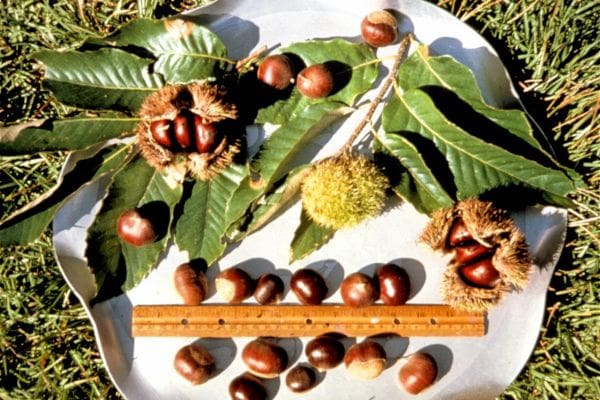Dunstan Chestnut Planting Tips

Planting mast orchards is a great way to attract and hold more wildlife, and Dunstan Chestnuts should be at the top of every orchardist’s species list. However, mast production is directly related to the effort that goes into establishing orchards. That’s why the folks at Chestnut Hill Outdoors offer sound advice on planting and care.
Site Selection – Dunstan Chestnut trees do best in well-drained, sandy-loam soils with a pH around 5.5 – 6.5, so avoid low-lying areas. They also require full sun for best results.
Spacing – Young trees should be planted 30-50’ apart, with ideal spacing for nut production being 35-40′ apart. It may seem like a lot at first, but in time, Dunstan Chestnut trees can grow 40 – 60′ high with a 30 – 40′ spread, and crowding will reduce nut production.
Pruning – Chestnuts require minimal pruning. Light pruning in the early years helps trees form a solid central leader structure.
Fertilization – Do not fertilize at planting. Once the trees are established, fertilize in early spring (Mar-April) as growth begins. Do not fertilize in the fall, which could promote late-season tender growth that early frosts can damage.
Watering – Newly planted trees should be watered regularly. This is the most critical step in their establishment.
These are the basic steps. For more detailed instructions on planting by season and weed, pest and disease control, visit the Chestnut Hill Outdoors Learning Center at: https://chestnuthilloutdoors.com/learning-center/
In time, Dunstan Chestnut trees will provide a crop of nutritionally superior, sweet-tasting and abundant large nuts – up to 20 lbs/tree after only ten years, and as much as 50-100 lbs/tree at maturity. However, that level of production can only be achieved with proper planting.
Chestnut Hill is the best place for you to purchase your food plot and deer attractant plants because they offer a large selection, their plants are specifically bred to attract deer, and they offer customers different sized plants at different levels of growth.
For more information, please visit
WWW.CHESTNUTHILLOUTDOORS.COM

